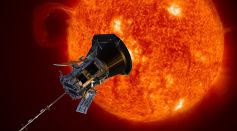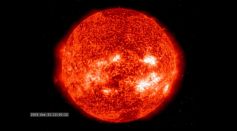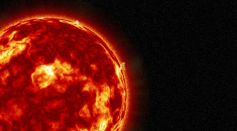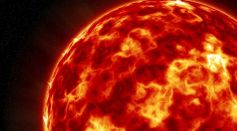Tags: Sun

Harnessing Sun's Power: Massive Solar Farms May Impact Weather and Climate

NASA's Parker Solar Probe Prepares for Historic Star Landing: Closer and Faster Than Ever Before

Astronomical Events 2024: Here Are Some of the Biggest Celestial Events To Look Forward To This Year

NASA Parker Solar Probe Reaches Close Approach 'Perihelion' to the Sun For the 18th Time

Total Solar Eclipse 2024: 10 Major Cities in North America in Path of Totality, Duration, and Potential Mass Travel Event
Korea’s Artificial Sun KSTAR Receives Upgrade to Withstand Temperature 6 Times Hotter Than Center of the Sun

Aurora Alert? Intense X5-Class Solar Flare Bursted on New Year's Eve, Making It the Strongest in 6 Years

Sun-Kissed Skin Woes: What Causes Them and How To Stay Safe in the Sun

Sunshine Vitamin: Here's Why Vitamin D Matters and What Happens When You Lack It

Scariest Space Facts: On Asteroid Collisions, Coronal Mass Ejections, and More

Black Hole Sun Theory Explained: Will This Solar Ball Turn Into a Giant Void?

Queen Elsa? NASA Snaps Rare 'Ice Halo' Around the Sun That Resembles Scene From Disney's Frozen
Halley’s Comet Finally Heads Back to the Sun After Reaching Aphelion, Begins Its 38-Year Long Journey Back to Earth

How Many Times Did Each Planet in the Solar System Orbited the Sun? Scientists Explain Their Orbital Period

Coronal Mass Ejection Expected After Sun Released Strongest Solar Flare That Causes Radio Blackout
Mars’ Atmosphere Swells Nearly 4 Times Its Usual Size Without Solar Wind

Aditya-L1 Solar Observatory Unveils Maiden Views of the Sun Captured by SUIT Payload en Route to Cosmic Destination
Giant Hole in Sun Wider Than 60 Earths, 5 Times Jupiter’s Diameter Spewing Powerful Solar Wind

Can a Passing Star Save Earth? Scientists Assess Odds Amid the Sun's Fiery Fate

Halley's Comet This Week: Famous Possible 'Star of Bethlehem' Snowball To Reach Farthest Point From Sun
Most Popular

Persistent Coughs Are Everywhere: Here's What Experts Think Is Causing It

Ancient Hotspot Found to Have Created Great Lakes 300 Million Years Ago

Mysterious Structures Discovered Beneath the Pacific Ocean, Puzzle Scientists

Health Benefits of Drinking Hot Chocolate





